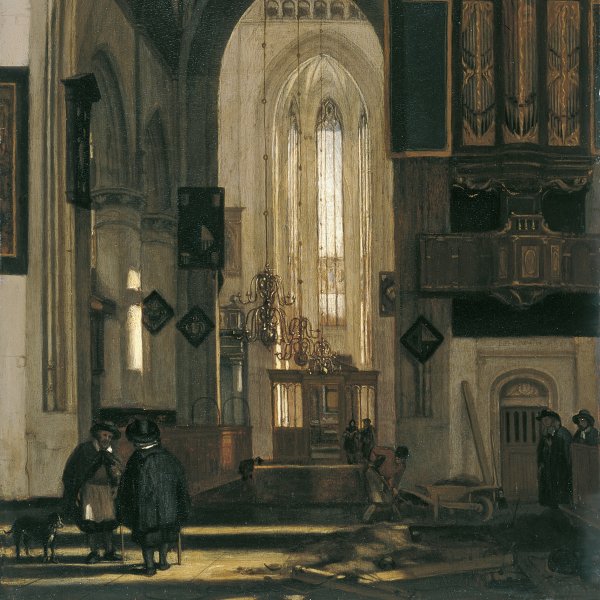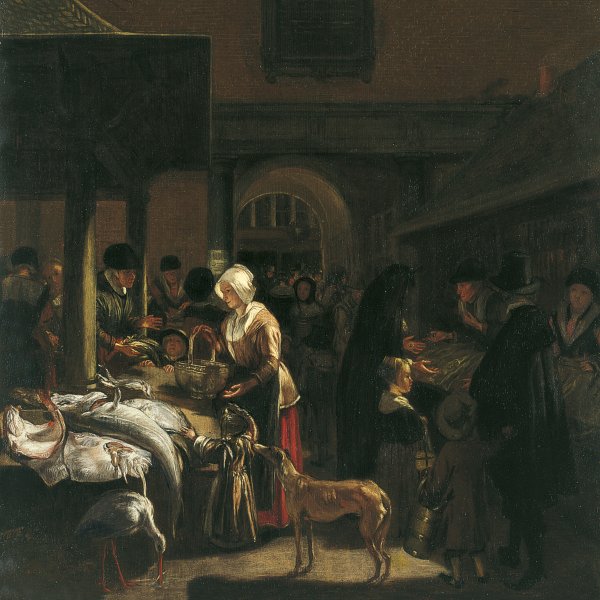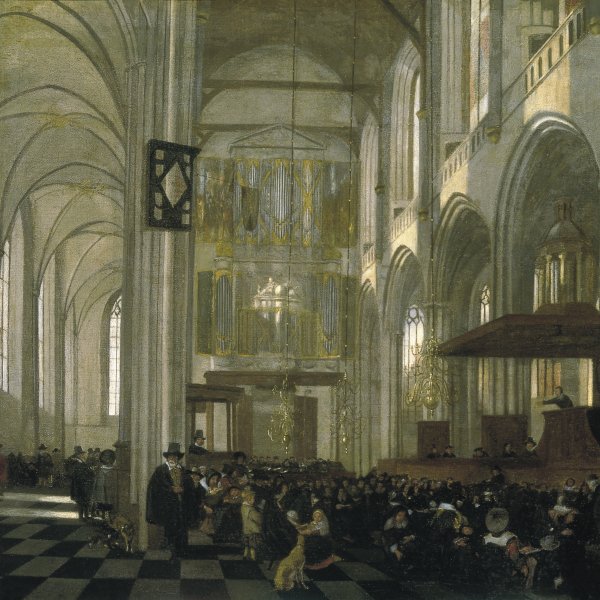Emanuel de Witte
Emanuel de Witte was born in Alkmaar around 1617. Son of a schoolteacher, he trained in Delft with the still-life painter Evert van Aelst. By 1636 he was registered in the painters’ guild in Alkmaar and in 1639 and 1640 is mentioned in various municipal documents in Rotterdam. He is again documented in Delft for the baptism of his daughter Jaquemyntgen in 1641 and is recorded in the painters’ guild of that city the following year. De Witte remained in Delft for approximately the next ten years. His early works comprise portraits, history paintings and mythological compositions, all of which reveal the influence of Gerrit Dou and the Utrecht school painters.
From 1650 onwards De Witte began to specialise in architectural paintings, in particular church interiors. Together with Gerard Houckgeest and Hendrick Cornelisz. van Vliet, he is considered one of the principal representatives of this genre in Delft. His early paintings are inspired by Houckgeest, but he soon developed his own style and technique, producing paintings of great quality. Around 1652 De Witte moved to Amsterdam where he married for the second time three years later. The city’s buildings, including the Nieuwe Kerk and the interior of the Portuguese synagogue, provided the inspiration for his paintings at this date, but only a few offer topographically accurate depictions as De Witte tended to take different elements and rearrange them in purely imaginary interiors, in contrast to Saenredam. De Witte also executed genre paintings, views of imaginary ports and, from 1660 onwards, scenes of markets. The unequal and variable quality of his work has been interpreted as reflecting his unstable personality and his last years were troubled by debt. De Witte’s only pupil was Hendrick van Streek.







